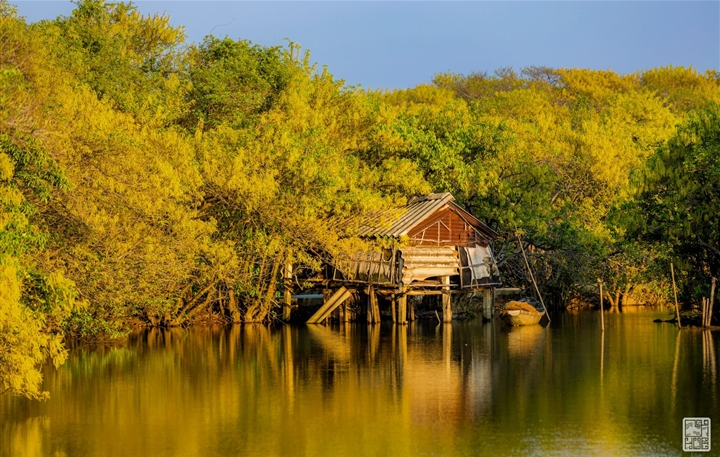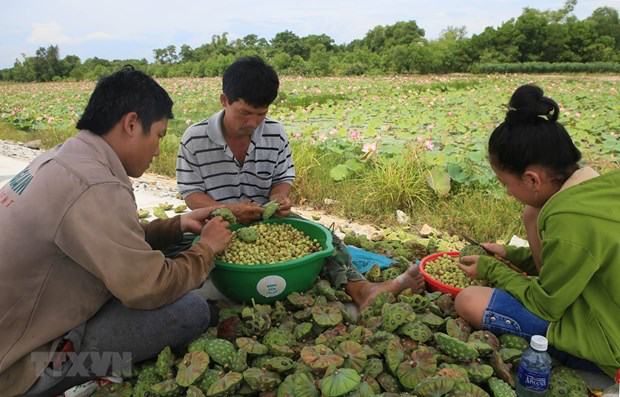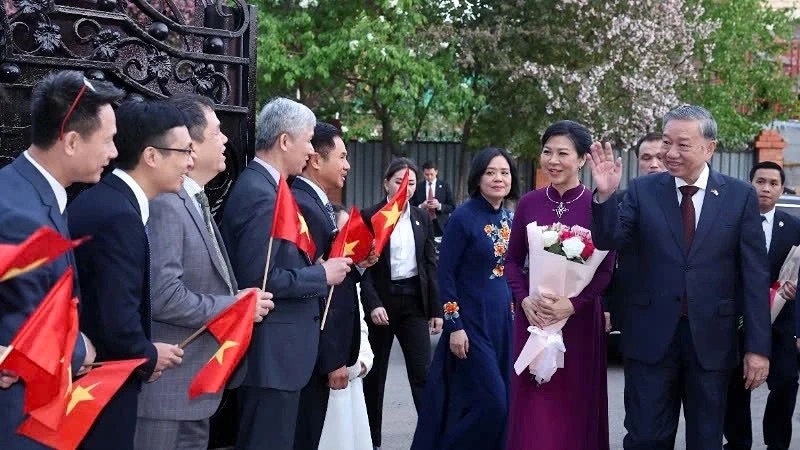Unique Vestiges of Vietnam's Past - 13 Gates of Ancient Hue Citadel
| Getting lost in Hue's beautiful Ru Cha forest | |
| Blooming lotus flowers add allure to Vietnam’s central provinces | |
| Sustainable lotus cultivation increases in Thua Thien Hue |
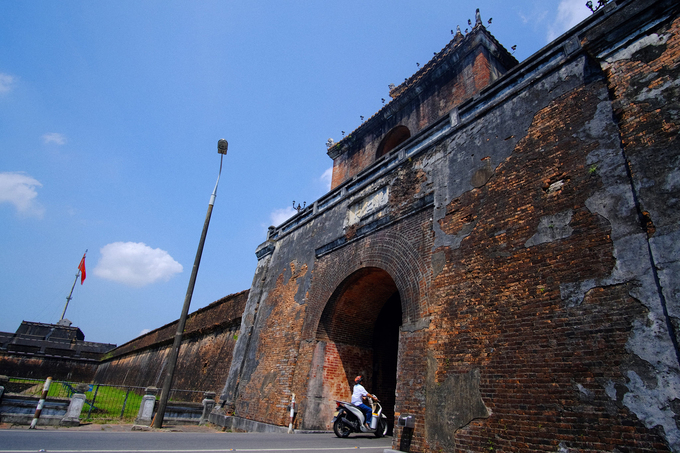 |
| Ngan Gate. Photo: VnExpress |
Walking under a stone archway, tourists step into a Vietnamese site known for its regal splendor. Hue Citadel has a total of 13 gates, including 10 road gates, 1 side gate and 2 waterway gates. The original gates were built from the reign of King Gia Long, to the reign of King Minh Mang, who completed the upper gazebo. Over time, after the war, some doors remained in their original state, collapsed doors were restored, and many doors were forgotten and abandoned.
In addition to the main function as the outermost protective layer of the Forbidden City, the Imperial Citadel - the living and working place of the king and the court - the gates are also the gateway for travel and trade of residents living in the area. The doors are living witnesses of the history and life of Hue Citadel for more than 200 years.
The Ngan Gate is also known as The Nhan Mon, which is one of the two doors for the king and the royal family to enter and exit the Citadel. Each time, the court sent soldiers out to block the road in front of the city, preventing anyone from passing, so it was called the Ngan Gate. Ngan Gate is now located to the left of Ky Dai, on the one-way street of the same name, cutting Le Duan street and 23/8 street.
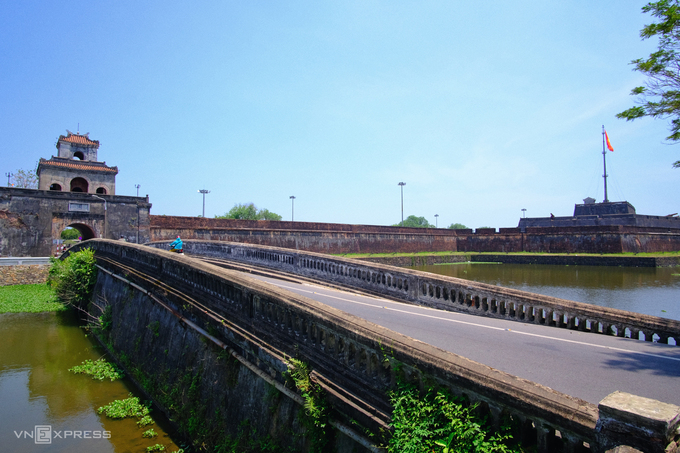 |
| Sap Gate. Photo: VnExpress |
Located to the right of Ky Dai is Sap Gate, also known as Quang Duc Gate, also located on the one-way traffic road that cuts Le Duan street into 23/8 street. This gate once collapsed both the gazebo and the archway in 1953 due to floods, so the folk called this door "Sap Gate". Along with the Ngan Gate, the Sap Gate is one of the two doors for the king and the royal family to enter and exit. Nine famous cannons of the Nguyen Dynasty are currently kept at these two gates.
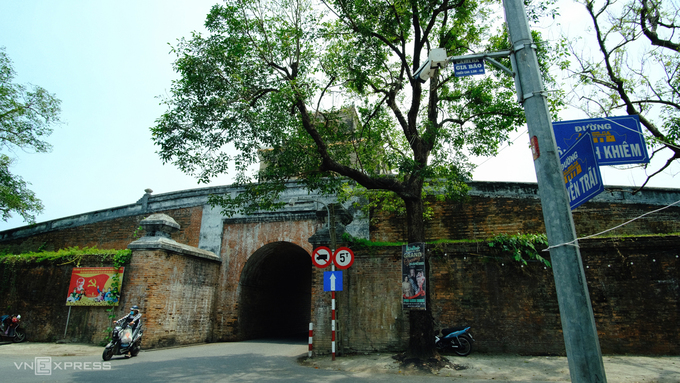 |
| Nha Do Gate. Photo: VnExpress |
Located in the south of Nguyen Trai Street is Nha Do Gate, officially known as Chanh Nam Gate. During the reign of King Gia Long, there was a storehouse for the king's supplies and weapons for the soldiers here, so people called the Chanh Nam Gate as the Nha Do Gate.
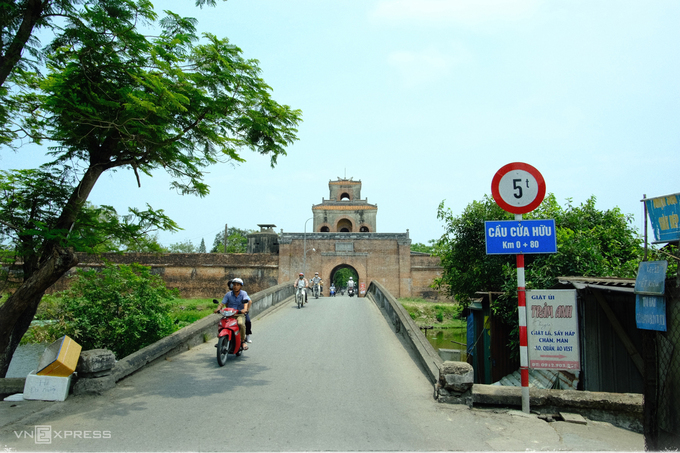 |
| Huu Gate. Photo: VnExpress |
Huu Gate - the Tay Nam gate is associated with a famous story in history, here King Ham Nghi issued the "Can Vuong" decree against the French colonialists. Huu Gate is now located at the beginning of Yet Kieu street, southwest of the Citadel, so it is called the Tay Nam Gate, people see it as located on the "right" side, so it is always called the Huu Gate as it is today.
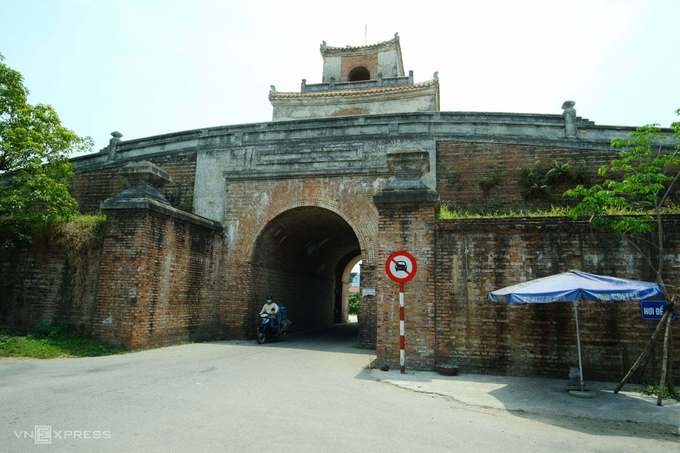 |
| Chanh Tay Gate. Photo: VnExpress |
Chanh Tay Gate has no folk name, located in the west of the Citadel, on Thai Phien Street today. This place used to be the site of fierce fighting during the Spring 1968 war. The gazebo above the citadel was completely destroyed, now it was restored.
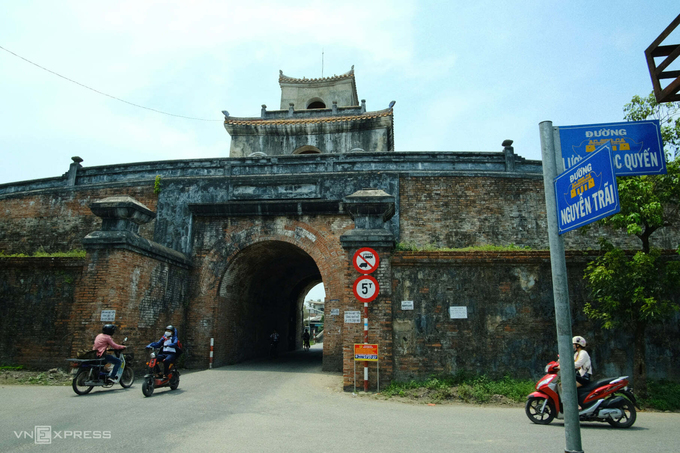 |
| An Hoa Gate. Photo: VnExpress |
An Hoa Gate today is located in the northwest connecting Nguyen Trai street to Tang Bat Ho street outside the Citadel. Along this Nguyen Trai street to the south is the aforementioned Nha Do Gate, the opposite direction is An Hoa Gate. The name An Hoa Gate is because the outside of this gate is the village and market of the same name.
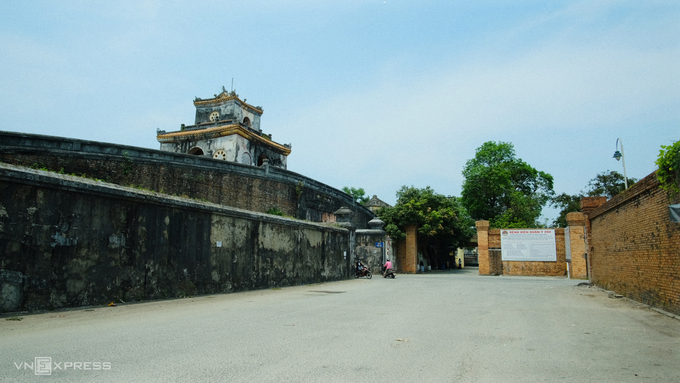 |
| Hau Gate. Photo: VnExpress |
The Hau Gate or Chanh Bac Mon is located at the back of the Citadel. Hau Gate is located on Dinh Tien Hoang street, outside is Tang Bat Ho street, next is Bach Yen bridge across Cua Hau river. Chanh Bac gate is also known as the big Mang Ca gate. After the French colonialists captured the Citadel, the large Mang Ca gate was closed to establish Fort Mang Ca. Due to the consequences of the war, this gate was not opened for more than 100 years, until 2004 Thua Thien Hue province reopened this door.
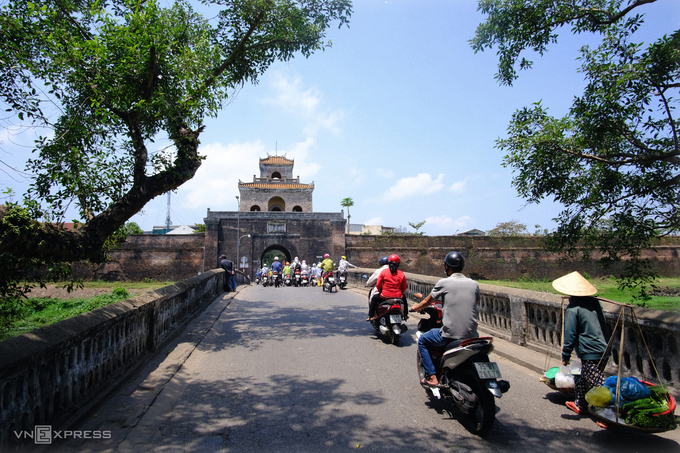 |
| Ke Trai Gate. Photo: VnExpress |
Ke Trai Gate - Northeast Gate is currently located on Cua Trai street, at the northeast corner of the old citadel. In the past, Ke Trai was the name of the village located in front of the city gate, focusing on trading and forming two rows of houses, tents and shops. Hue people gradually called it the name of the city gate.
Ke Trai Gate leads to the current military area, so few people or tourists can enter or access.
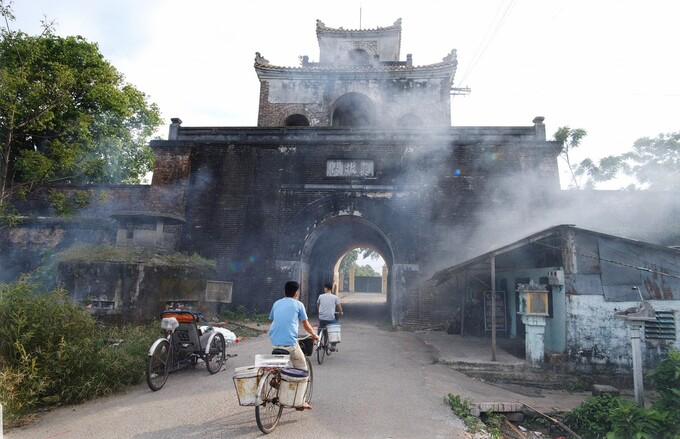 |
| Dong Ba Gate. Photo: VnExpress |
Dong Ba Gate or Chanh Dong gate, is the gate related to the famous Dong Ba market today, although the market is no longer at this location. Dong Ba Gate is also known as Chanh Dong Mon - the East Gate of the Citadel, located on Mai Thuc Loan street, one side is located on Xuan 68 street. The old market was originally named Dong Hoa, from the reign of King Gia Long. The capital fell, the market was burned by the French colonialists. After King Dong Khanh rebuilt it and changed it to Dong Ba, avoiding the name Ho Thi Hoa, the mother of King Thieu Tri. By the time of Thanh Thai, Dong Ba market was re-planned and moved to today's location.
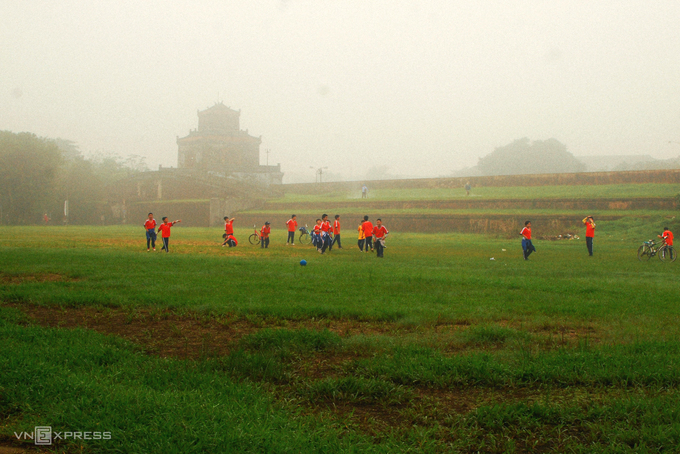 |
| Thuong Tu Gate. Photo: VnExpress |
Thuong Tu Gate - Dong Nam Mon Gate today is located on Dinh Tien Hoang street, currently a one-way street circulating from the Citadel to Tran Hung Dao street. The name Thuong Tu is because in the past, there was a Thuong Tu institute that was built to govern and take care of horses to pull the carriage for the king. Now, on both sides of the door is a large lawn where children often gather to play.
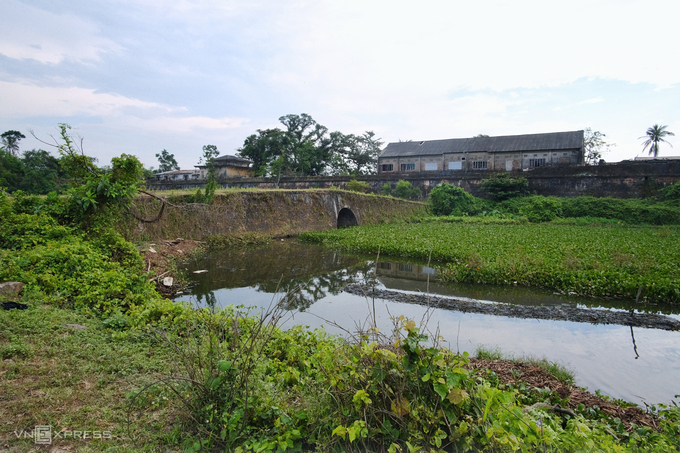 |
| Tran Binh Mon. Photo: VnExpress |
Tran Binh Mon is not the door leading out of the Citadel like the other gates but is a side door, belonging to the Citadel wall, leading to Tran Binh Dai - the fortress that arranged the defense system of the ancient Hue Citadel. In front of the door is a stone bridge over a moat to enter the territory of Tran Binh Dai. Behind the door is the military area, also known as the big Mang Ca area.
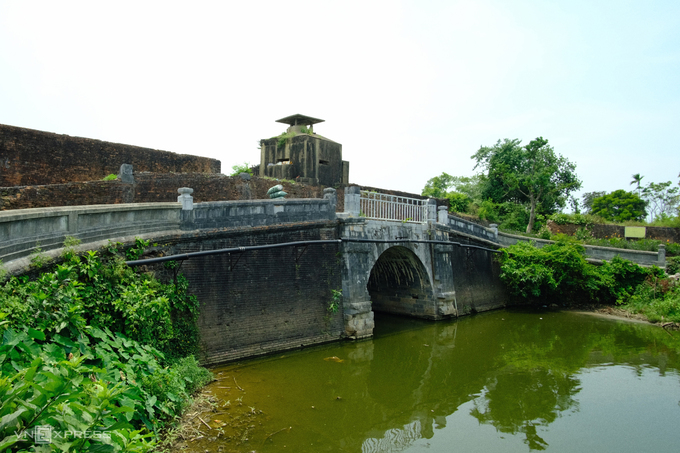 |
| Tay Thanh Thuy Quan. Photo: VnExpress |
Tay Thanh Thuy Quan is one of the two waterway gates of Hue, these two gates are located at the East - West ends of the Ngu Ha river inside the Citadel. Tay Thanh Thuy Quan is now located on Ton That Thiep street. Also known as Cong Thuy Quan, Tay Thanh Thuy Quan is a waterway connecting the Ke Van river outside with Ngu Ha river in the Citadel.
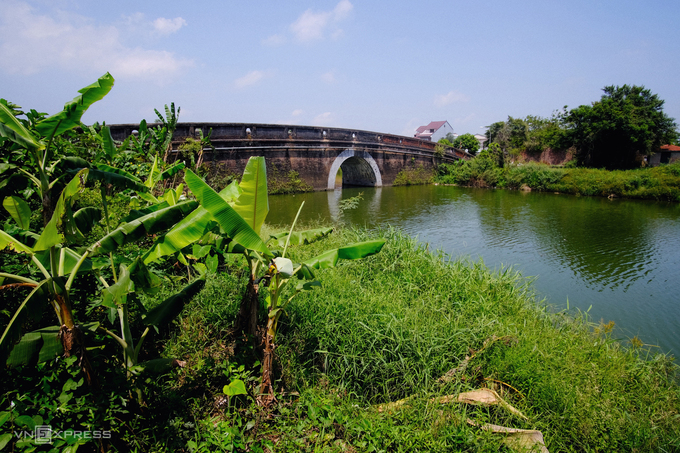 |
| Dong Thanh Thuy Quan. Photo: VnExpress |
Along with Tay Thanh Thuy Quan, Dong Thanh Thuy Quan are two waterway gates of Hue, the East - West project of Ngu Ha River in the Citadel. Dong Thanh Thuy Quan, also known as Luong Y culvert, is currently the Luong Y bridge, located on Xuan 68 street.
Hue Monuments ComplexThe Complex of Hue Monuments is located in and around Hue City in Thua Thien-Hue Province in the geographical centre of Vietnam and with easy access to the sea. Established as the capital of unified Vietnam in 1802 CE, Hue was not only the political but also the cultural and religious centre under the Nguyen Dynasty, the last royal dynasty of Vietnamese history, from 1802 to 1945 CE. The plan of the new capital is in accordance with ancient oriental philosophy, and respected the physical conditions of the site. The Ngu Binh Mountain (known as the Royal Screen) and the Perfume River, which runs through the city, give this unique feudal capital an entire setting of great natural beauty as well defining its symbolic importance. The site was chosen for a combination of natural features – hills representing a protective screen in front of the monuments or taking the role of “a blue dragon” to the left and “a white tiger” to the right – which shield the main entrance and prevent the entry of malevolent spirits. Within this landscape, the main features of the city are laid out. The structures of the Complex of Hue Monuments are carefully placed within the natural setting of the site and aligned cosmologically with the Five Cardinal Points (centre, west, east, north, south), the Five Elements (earth, metal, wood, water, fire), and the Five Colours (yellow, white, blue, black, red), cited UNESCO. The central structure is the Hue Citadel area which was the administrative centre of southern Viet Nam during the 17th and 18th centuries CE. Within the Hue Citadel were located not only administrative and military functions of the Empire, but also the Imperial Residence, the Hoang Thanh (Imperial City), the Tu Cam Thanh (Forbidden Purple City) and related royal palaces. |
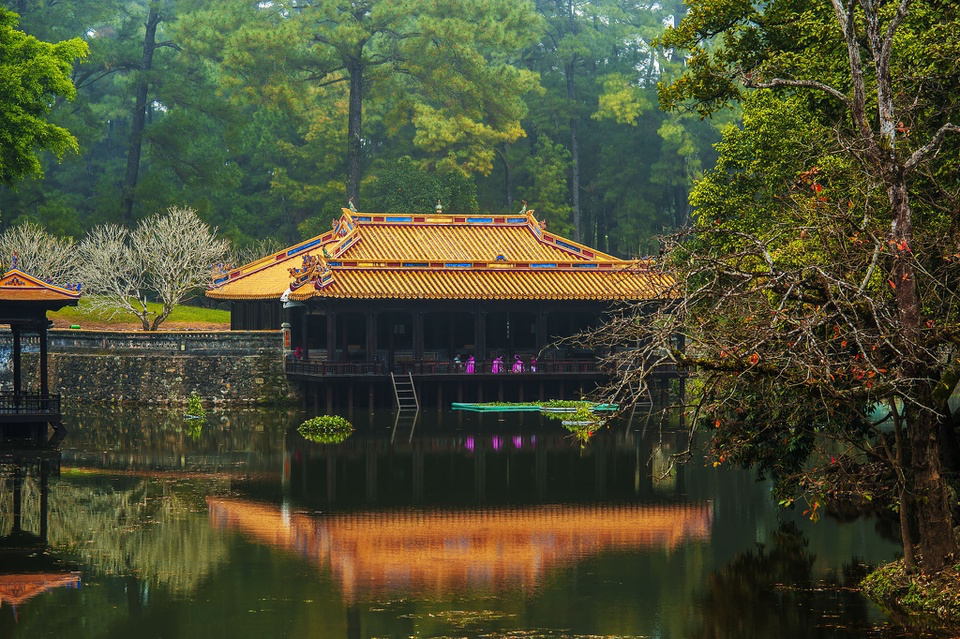 | Hue's ancient citadel preserves royal history and natural beauty Splendid architecture, royal tombs, and an abandoned waterpark- the land of the ancient capital transports vistors to Vietnam's colorful past. |
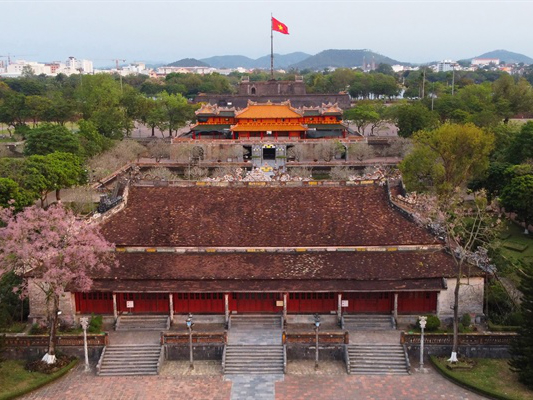 | Archeological excavation to be carried out at Palace of Nguyen dynasty The Center for Conservation of Hue Monuments announced on June 1 that the Thai Hoa Palace, where the golden throne of the 13 Nguyen dynasty ... |
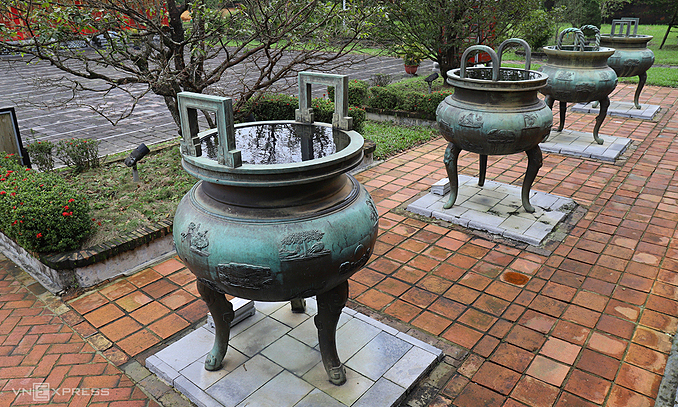 | Hue to seek UNESCO recognition for nine dynastic urns Hue is planning to seek UNESCO's world heritage recognition for its nine dynastic urns, which belonged to Nguyen Dynasty era, Vietnam's last royal rulers. |
Recommended
 Travel
Travel
Strategies for Sustainable Growth of Vietnam’s Tourism from International Markets
 Travel
Travel
Vietnam Strengthens Its Presence On The Global Tourism Map
 Multimedia
Multimedia
Phong Nha-Ke Bang National Park Named Top Adventure Travel Site
 Travel
Travel
Vietnam Welcomes Record-High Number of International Visitors
 Travel
Travel
Luxury Train From Hanoi To Hai Phong To Be Launched In May
 Travel
Travel
Phong Nha Named Top Budget-Friendly Travel Destination for Spring 2025: Agoda
 Travel
Travel
Four Indian Films Introduced to Lao Cai Audience
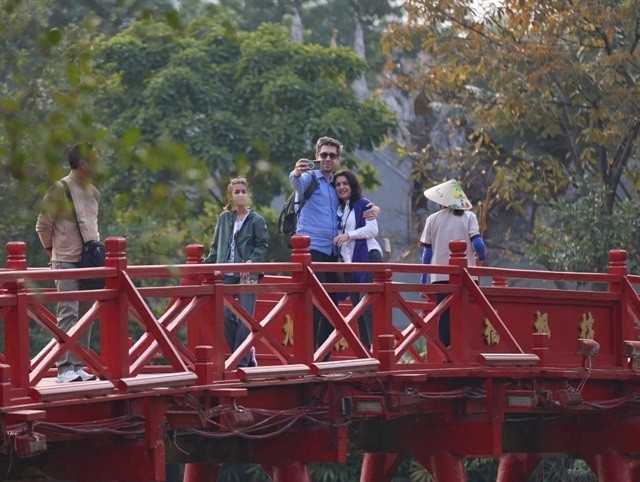 Travel
Travel

